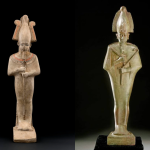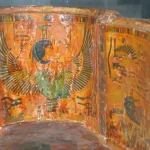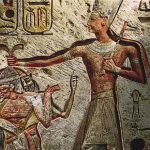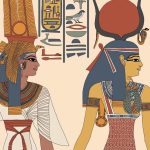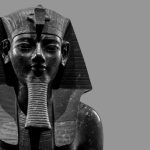Bronze Statuette of a Sphinx on a Wooden Standard
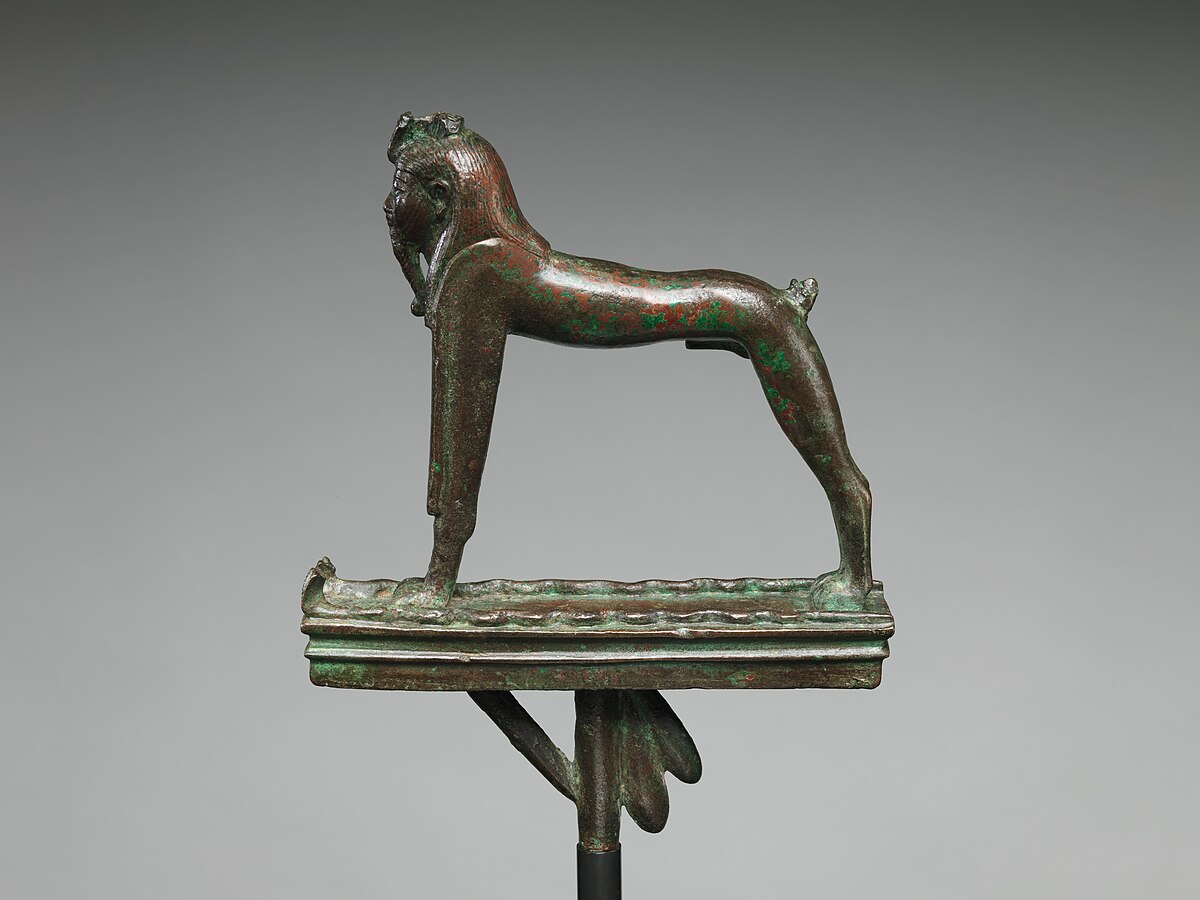
Bronze Statuette of a Sphinx on a Wooden Standard
Ptolemaic Period (304–30 B.C.) or earlier
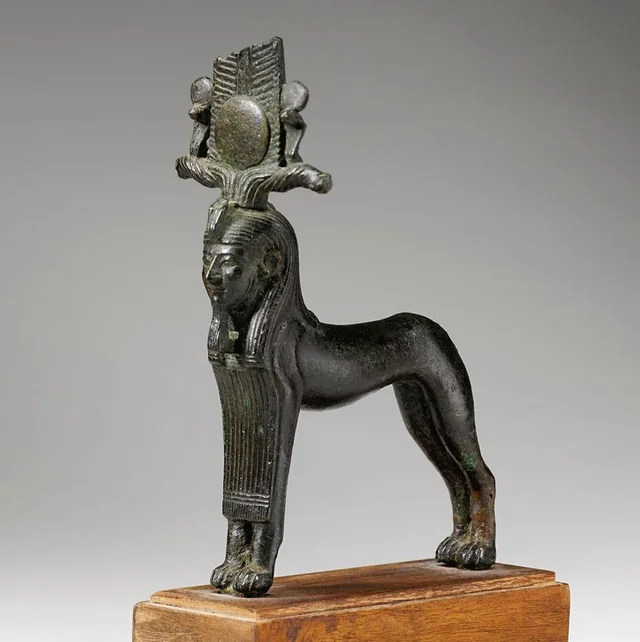
This bronze statuette depicts a sphinx mounted on a wooden standard. The figure may represent an unidentified deity or king, reflecting the dual symbolic role of the sphinx as both divine guardian and royal emblem.
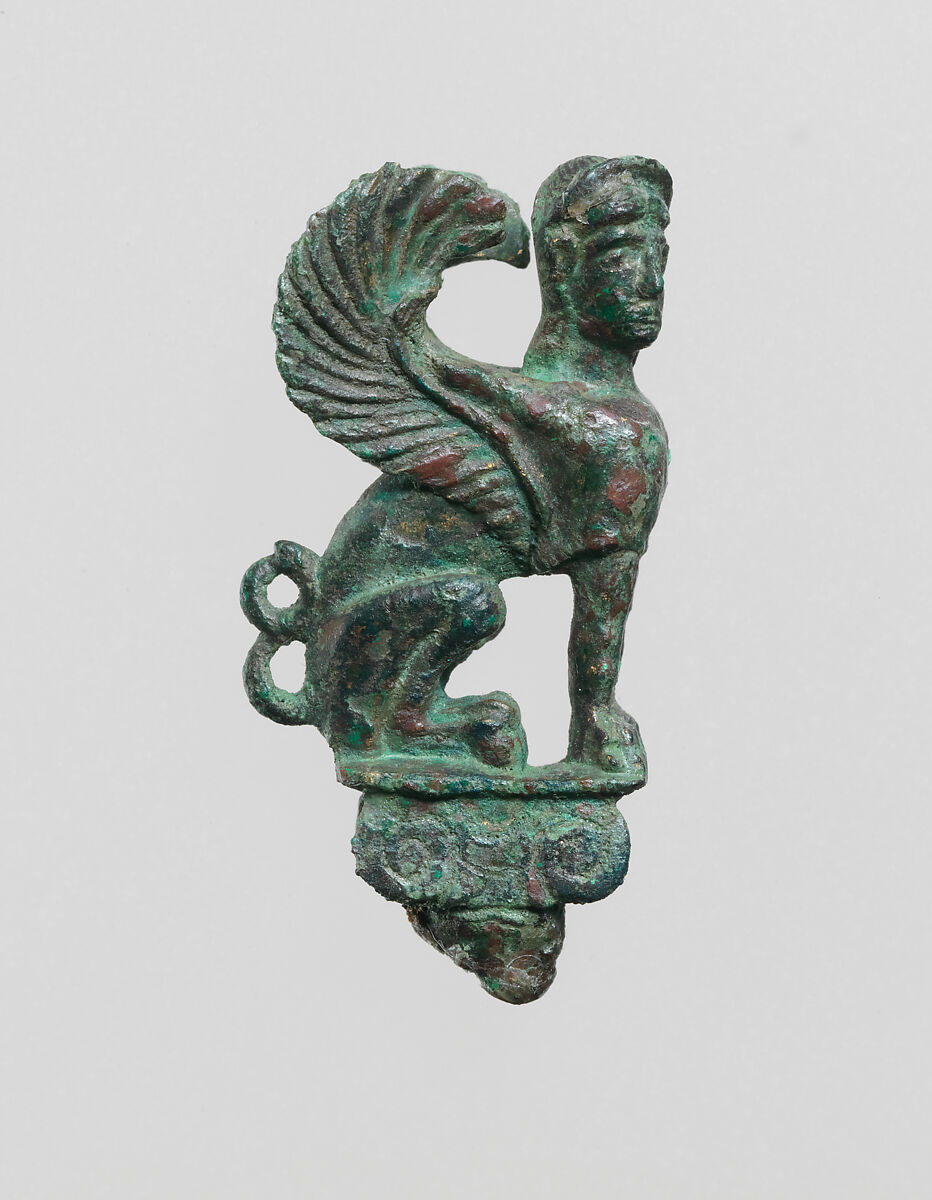
The Sphinx is one of the most iconic monuments of ancient Egypt, typically depicted as a mythical creature with the body of a lion and the head of a human, often a pharaoh.
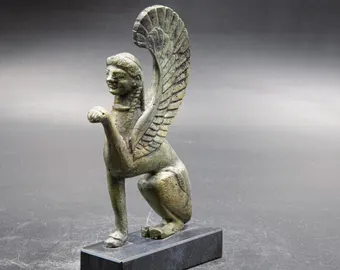
It symbolizes strength, wisdom, and royal authority, serving as a guardian figure for temples and sacred sites. The Great Sphinx of Giza, dating to the reign of Pharaoh Khafre (c. 2558–2532 BCE), is the largest and most famous example, carved from a single limestone ridge. The monument reflects the Egyptians’ skill in art and engineering, as well as their religious beliefs, linking the pharaoh’s power to divine protection. Throughout history, the Sphinx has inspired awe, legend, and scholarly study, remaining a lasting symbol of ancient Egyptian civilization.

